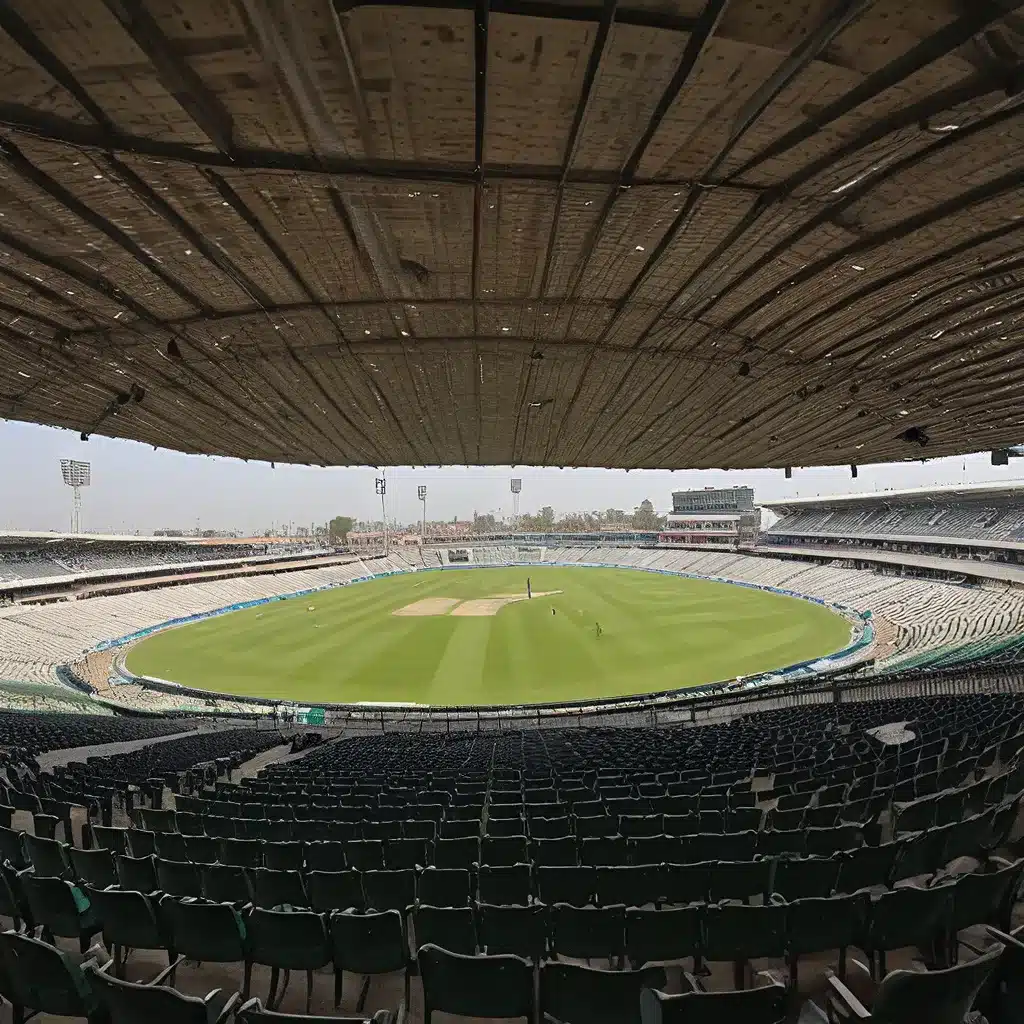
The Architectural Grandeur of Gaddafi Stadium
Gaddafi Stadium, nestled in the heart of Lahore, Pakistan, is a true architectural marvel that has stood as a testament to the city’s rich cricketing heritage for decades. This colossal arena, with its imposing grandstands and intricate design, has witnessed some of the most thrilling and memorable moments in the annals of international cricket.
Constructed in 1959, the stadium was originally known as Lahore Stadium before being renamed in honor of former Libyan leader Muammar Gaddafi in 1974. The redesign and expansion of the venue in the 1980s transformed it into a world-class facility capable of hosting the biggest cricketing events. The stadium’s capacity was increased to a staggering 27,000, making it one of the largest cricket stadiums in Pakistan.
The stadium’s architectural design is a testament to the country’s rich cultural heritage and its passion for the sport. The distinct domed roofs and intricate arched entrances evoke a sense of grandeur and elegance, while the towering floodlights and expansive seating areas ensure that every spectator can enjoy the action on the pitch.
The Evolution of Gaddafi Stadium
Gaddafi Stadium has undergone several renovations and upgrades over the years, each one aimed at enhancing the overall fan experience and keeping the venue up to date with the latest cricketing standards. In the early 2000s, the stadium underwent a major overhaul, including the installation of state-of-the-art sound systems, the construction of modern hospitality suites, and the improvement of accessibility for disabled spectators.
The most recent renovations, completed in 2017, have further elevated the stadium’s status as a premier cricketing destination. The installation of giant LED screens, the enhancement of the media facilities, and the refurbishment of the player’s pavilion have all contributed to the stadium’s modernization, ensuring that it remains a world-class venue for international cricket.
The Cricketing Legacy of Gaddafi Stadium
Gaddafi Stadium has played a pivotal role in Pakistan’s cricketing history, hosting numerous iconic matches and historic events that have captured the imagination of fans around the world. From the thrilling Test matches between Pakistan and their arch-rivals India to the unforgettable one-day internationals that have seen the rise of cricketing legends, this stadium has been the stage for some of the most electrifying moments in the sport.
One of the most memorable events held at Gaddafi Stadium was the 1996 Cricket World Cup semifinal between Pakistan and India. The match, which saw Pakistan emerge victorious, was a testament to the stadium’s ability to create an electric atmosphere and captivate the audience. The roar of the passionate crowd echoed through the stadium, adding to the already intense rivalry between the two cricketing giants.
In addition to hosting international matches, Gaddafi Stadium has also been the home ground for the Lahore-based domestic cricket teams. The Quaid-e-Azam Trophy, Pakistan’s premier first-class cricket tournament, has been contested at this iconic venue, further solidifying its place in the country’s cricketing heritage.
The Challenges and Controversies Surrounding Gaddafi Stadium
Despite its rich history and undeniable significance, Gaddafi Stadium has not been without its fair share of challenges and controversies. One of the most significant issues has been the security concerns that have plagued the venue, particularly in the aftermath of the 2009 attack on the Sri Lankan cricket team’s bus.
This tragic incident led to the suspension of international cricket in Pakistan for several years, as teams were reluctant to tour the country due to safety concerns. The government and the Pakistan Cricket Board have since worked tirelessly to enhance security measures and restore the country’s reputation as a safe destination for international cricket.
Furthermore, the stadium’s association with the former Libyan leader Muammar Gaddafi has also been a source of controversy. Some have called for the stadium to be renamed, arguing that it should not be named after a leader with a questionable human rights record. However, others have defended the decision, citing the significant financial and infrastructural support that Gaddafi provided for the development of the stadium and the sport in Pakistan.
The Future of Gaddafi Stadium
As Pakistan continues to rebuild its reputation as a safe and welcoming host for international cricket, Gaddafi Stadium remains a crucial part of the country’s cricketing landscape. The stadium’s ongoing renovations and upgrades suggest that it will continue to play a vital role in the growth and development of the sport in the region.
Experts suggest that the future of Gaddafi Stadium lies in its ability to adapt and evolve to meet the changing demands of the sport. This may include further expansion of the seating capacity, the incorporation of cutting-edge technology, and the enhancement of the overall fan experience. Additionally, there is ongoing discussion about the possibility of renaming the stadium to better reflect its significance and the values of the sport.
Regardless of the challenges and controversies, Gaddafi Stadium remains a cherished and revered part of Pakistan’s cricketing heritage. As the country continues to showcase its passion for the sport and welcome the world to its shores, this iconic venue will undoubtedly remain a centerpiece of the nation’s cricketing landscape for generations to come.

